NA Symposium 2021 update
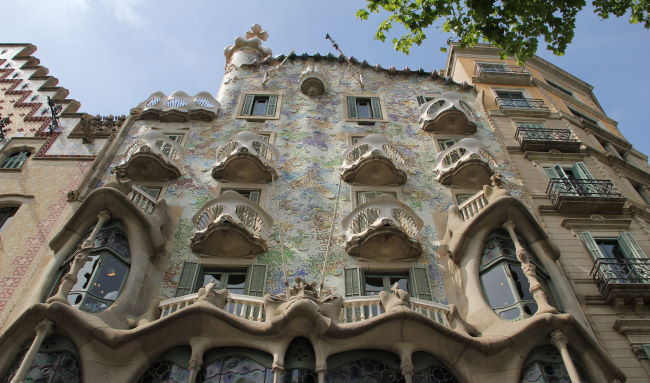
At the time of going to press we have no definitive update on the 2021 NA Symposium, but we will continue to post updated information first on our Facebook page. Thank you for bearing with us!
|
 |  |
Welcome to Issue 35
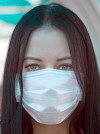 What a year 2020 has been. We hope this issue of NA News finds you well and coping with the unprecedented challenges that the pandemic has posed. In this issue we'll talk about exciting developments in NA research, a new emergency card available for free to patients and families, thoughts on brain donation, and a look at speech intelligibility throughout the course of NA. For the latest updates from the Advocacy, don't forget to follow our Facebook page. What a year 2020 has been. We hope this issue of NA News finds you well and coping with the unprecedented challenges that the pandemic has posed. In this issue we'll talk about exciting developments in NA research, a new emergency card available for free to patients and families, thoughts on brain donation, and a look at speech intelligibility throughout the course of NA. For the latest updates from the Advocacy, don't forget to follow our Facebook page.
Plan now for Rare Disease Day 2021
 Rare Disease Day is held on the last day of February every year to raise awareness of rare diseases. 28 February 2021 will be the fourteenth international Rare Disease Day coordinated by EURORDIS. On and around this day hundreds of patient organisations from countries and regions all over the world will hold awareness-raising activities. Learn more here. You can raise funds for NA Advocacy research. See our website for ideas. Rare Disease Day is held on the last day of February every year to raise awareness of rare diseases. 28 February 2021 will be the fourteenth international Rare Disease Day coordinated by EURORDIS. On and around this day hundreds of patient organisations from countries and regions all over the world will hold awareness-raising activities. Learn more here. You can raise funds for NA Advocacy research. See our website for ideas.
Hear the latest from the NA Advocacy in the US
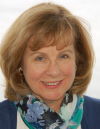 Greetings from Susan Wagner of NA-USA. With autumn 2020 in full swing, and with all the challenges the year has posed, I hope you have had some unexpected positive experiences which has made this a memorable year other than just COVID-19 related. Rethinking and readjusting, the how, where and when to vacation/holidays, has hopefully, tapped into your creative side. Enjoyment of the simpler things in life; puzzles, reading, cooking, the outdoors, has been calming and productive at my end. NA-USA members continue to work on the logistics and organization of NA-USA. Greetings from Susan Wagner of NA-USA. With autumn 2020 in full swing, and with all the challenges the year has posed, I hope you have had some unexpected positive experiences which has made this a memorable year other than just COVID-19 related. Rethinking and readjusting, the how, where and when to vacation/holidays, has hopefully, tapped into your creative side. Enjoyment of the simpler things in life; puzzles, reading, cooking, the outdoors, has been calming and productive at my end. NA-USA members continue to work on the logistics and organization of NA-USA.
Greetings from Susan Wagner of NA-USA. With autumn 2020 in full swing, and with all the challenges the year has posed, I hope you have had some unexpected positive experiences which has made this a memorable year other than just COVID-19 related.
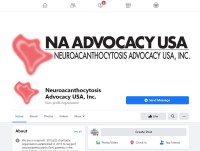 Rethinking and readjusting, the how, where and when to vacation/holidays, has hopefully tapped into your creative side. Enjoyment of the simpler things in life; puzzles, reading, cooking, the outdoors, has been calming and productive at my end. NA-USA members continue to work on the logistics and organization of NA-USA. Rethinking and readjusting, the how, where and when to vacation/holidays, has hopefully tapped into your creative side. Enjoyment of the simpler things in life; puzzles, reading, cooking, the outdoors, has been calming and productive at my end. NA-USA members continue to work on the logistics and organization of NA-USA.
With the guidance of Ginger Irvine from the NA Advocacy, along with Joy Willard-Williford’s wealth of non-profit and technical expertise, both our NA-USA Facebook page and our temporary NA-USA web page tab on the NA Advocacy site have been launched.
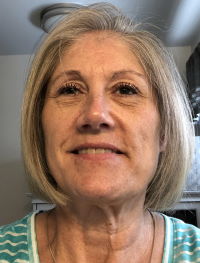 We are pleased to introduce the newest member to our NA-USA board, Candi Michaux DiMarzio from Virginia. We are pleased to introduce the newest member to our NA-USA board, Candi Michaux DiMarzio from Virginia.
Bob Metzger is in the process of notifying NORD (the National Organization of Rare Disease) to include NA-USA. To learn more about NORD; I attended the virtual NORD Workshop “Living Rare, Living Stronger” in July. This workshop was my first experience with the NORD organization, and my first virtual workshop. Navigating virtually from one workshop session to another, over the course of two days was easy. I chose both patient focused workshops and scientific workshops presented by doctors and researchers.
Obviously, the emphasis was on “rare” diseases and not “ultra-rare”, as our neuroacanthocytosis (NA) diseases classification falls into, yet the workshop information was helpful as there are many similarities between research processes, clinical trials and the unique patient and care giver struggles between “rare” diseases and “ultra-rare”.I found the sickle cell workshop  most interesting from a historical presentation from its past, present and future therapy perspective. Specifics on COVID-19 coping tools were presented with a resounding theme to reach out to others. most interesting from a historical presentation from its past, present and future therapy perspective. Specifics on COVID-19 coping tools were presented with a resounding theme to reach out to others.
When the Barcelona Symposium is finalised we look forward introducing ourselves further.
 |  |
NA PEOPLE: Thanks and best wishes to Giel Bosman
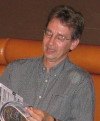 Adrian Danek writes to wish a happy retirement and thanks to colleague Giel Bosman. The reminder how rapidly time flies was inevitable to perceive, when our colleague and friend Giel wrote to us about his retirement from his university as of this September. Dr. G.J.C.G.M. Bosman (the Dutch go at great lengths with their first names) had served as a professor in the biochemistry department at Radboud University Nijmegen for more than a quarter century, researching and publishing proficiently in the field of red cell physiology and aging. Adrian Danek writes to wish a happy retirement and thanks to colleague Giel Bosman. The reminder how rapidly time flies was inevitable to perceive, when our colleague and friend Giel wrote to us about his retirement from his university as of this September. Dr. G.J.C.G.M. Bosman (the Dutch go at great lengths with their first names) had served as a professor in the biochemistry department at Radboud University Nijmegen for more than a quarter century, researching and publishing proficiently in the field of red cell physiology and aging.
Adrian Danek writes to wish a happy retirement and thanks to colleague Giel Bosman.
The reminder how rapidly time flies was inevitable to perceive, when our colleague and friend Giel wrote to us about his retirement from his university as of this September. Dr. G.J.C.G.M. Bosman (the Dutch go at great lengths with their first names) had served as a professor in the biochemistry department at Radboud University Nijmegen for more than a quarter century, researching and publishing proficiently in the field of red cell physiology and aging.
He had first written in 1988 about the red cell deformation of acanthocytosis and was a natural choice of speaker at the very first International Neuroacanthocytosis Symposium in 2002. He was a regular at all subsequent meetings and always distinguished himself as a team player in the efforts of our slowly growing international community of affected families and researchers. It is to him that we owe the acronym for the eventually successful application for our consortium supported from European research funds. "EMINA" stands for European Multidisciplinary Initiative for Neuroacanthocytosis and was continued by an EMINA-2. Both, "initiative" and "multidisciplinary" seem to apply to Giel, too, and as applications under alternative acronyms were less successful, we hope for an EMINA-3, perhaps with his input?
We send him our very best wishes as he continues his activities as a teacher, now of the Dutch language, for high school students with a refugee background. A specific memory is from the meeting in Kyoto, Japan, in 2006, and might have been captured in these photos from our stint at the Karaoke bar.
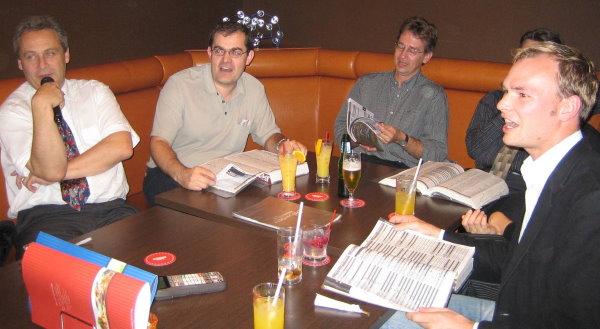
 |  |
Adrian Danek reports from 10th European Conference on Rare Diseases and Orphan Products (ECRD)
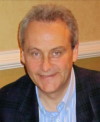 The current situation has brought about new ways to meet and interact: very few people by now have not had their own experiences with virtual meetings. Among these was the 10th European Conference on Rare Diseases and Orphan Products (ECRD). I would not have been able to join an in-person convention in Stockholm but was able to participate in that my first virtual meeting thanks to the Advocacy. I was truly impressed by the introductory presentation of David Lega, a Swedish Member of the European Parliament. Lega pointed out inequalities in allocation of educational and medical resources during the current health crisis and he warned that people with disabilities must not be forgotten in these difficult days. The current situation has brought about new ways to meet and interact: very few people by now have not had their own experiences with virtual meetings. Among these was the 10th European Conference on Rare Diseases and Orphan Products (ECRD). I would not have been able to join an in-person convention in Stockholm but was able to participate in that my first virtual meeting thanks to the Advocacy. I was truly impressed by the introductory presentation of David Lega, a Swedish Member of the European Parliament. Lega pointed out inequalities in allocation of educational and medical resources during the current health crisis and he warned that people with disabilities must not be forgotten in these difficult days.
The current situation has brought about new ways to meet and interact: very few people by now have not had their own experiences with virtual meetings. Among these was the 10th European Conference on Rare Diseases and Orphan Products (ECRD). I would not have been able to join an in-person convention in Stockholm but was able to participate in that my first virtual meeting thanks to the Advocacy. I was truly impressed by the introductory presentation of David Lega, a Swedish Member of the European Parliament (available also via https://www.youtube.com/watch?v=99G3emwDVzE&feature=youtu.be). Lega pointed out inequalities in allocation of educational and medical resources during the current health crisis and he warned that people with disabilities must not be forgotten in these difficult days.
The main emphasis of ECRD was not so much the detail of a single rare disease but what the commonalities are of these often neglected diseases so that they can attract the political attention for their specific social and medical needs. Among others, the current state of “Rare2030” was presented, a project to propose policy recommendations to the European parliament (www.rare2030.eu). Four basic scenarios were offered, dependent upon either more collective or more individual activity and whether innovation was more patient- or more market-led.
For many of us it was clearly fortunate that because of the global situation otherwise costly meetings at attractive yet not necessarily easy to reach destinations switched to the virtual format, too. Without leaving my desk and either fully free or at very low cost, I was able to profitably attend sessions of the European Academy of Neurology (https://www.ean.org/congress-2020) and the International Parkinson and Movement Disorder Society (https://www.mdscongress.org/) meetings as well as the 7th International Symposium on Neurodegeneration with Brain Iron Accumulation (NBIA) and Related Disorders (https://nbiascientificsymposium.org/), where I even presented a new family observation on the NBIA/neuroacanthocytosis overlap at a “flash session”. The main outcome is our participation in the MDSGene collaboration that aims to provide an internet information repository of individual gene mutations and the corresponding clinical findings (http://www.mdsgene.org/).
Informal, perhaps even “conspirative” talk as well as meeting and gathering with old and new acquaintances, however, does not happen and there is clearly a lack of the comraderie that is otherwise experienced during receptions and outings. Some virtual presentations suffer from the lack of rigor imposed by the atmosphere at a formal meeting, e.g. sitting in front of a laptop or standing at a lectern, and the attire expected. On the other hand, global communities are joined together in real time across day and night, across all time zones, and it is much easier to start chatting with an authority in the field than when these people are surrounded by their “courts” at a traditional evening social. Checking mails or jotting down new ideas during a not fully engaging lecture has become even easier than during the conventional meeting and the scrutiny of your colleagues´ living rooms or their diligently placed video backgrounds can offer some welcome distraction.
With the course of the global pandemic still fully unpredictable, it might not be an unwise decision to hold our 10th scientific meeting in 2021 in the virtual format. For the future we might think of switching biannually between in-person meetings (even years) and virtual neuroacanthocytosis symposia (uneven years). In the end, this should actually increase the cohesion of our community as well as scientific progress.
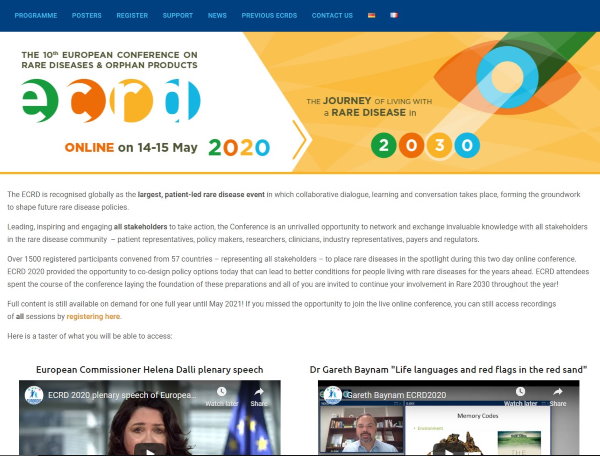
 |  |
Your language skills can help us reach more readers
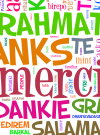 Are you proficient in a non-English language? The Advocacy is seeking volunteers to help us expand our language capability for NANews. You may have noticed on the website that NANews is already translated into German and Polish, but we are keen to expand this further. Are you proficient in a non-English language? The Advocacy is seeking volunteers to help us expand our language capability for NANews. You may have noticed on the website that NANews is already translated into German and Polish, but we are keen to expand this further.
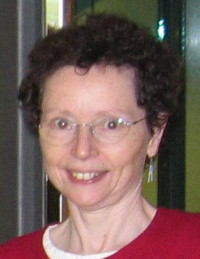 Are you proficient in a non-English language? The Advocacy is seeking volunteers to help us expand our language capability for NA News. Are you proficient in a non-English language? The Advocacy is seeking volunteers to help us expand our language capability for NA News.
You may have noticed on the website that NA News is already translated into German and Polish, but we are keen to expand this further. Our sincere thanks go to Louise Dreher, former trustee and friend of the late Peter Ball; Louise has been stalwart in her German translations for many years and has developed a template for others to do the same in other languages. We're grateful also to Teresa Zoladek in Poland, who has taken on the translation role for Polish.
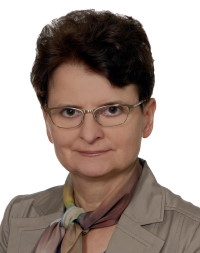 Could you help us reach even more patients, families and clinicians in their own language? No medical knowledge is required: any research papers will be linked in English, and Louise will be happy to share her experience and know-how for the process. Could you help us reach even more patients, families and clinicians in their own language? No medical knowledge is required: any research papers will be linked in English, and Louise will be happy to share her experience and know-how for the process.
We thank our diligent translators for their continued support!
PHOTO CREDIT: Louise Dreher (r) and Teresa Zoladek (l)
 |  |
Ruth Walker speaks at the MDS Virtual Congress 2020
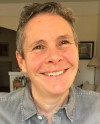 In September Ruth Walker was a key speaker at the MDS Virtual Congress 2020. Over 146 countries are represented and over 20,000 people registered for the event. Ruth spoke about Chorea in the section entitled Therapeutic Approaches to Chorea, Dystonia and Myclonus. She addressed general principles of managing choleric diseases, the pathophysiology of chorea, the mechanism of action of specific agents and choosing the right agents. In her book "The Differential Diagnosis of Chorea” Ruth dedicates this work to “all those affected by chorea, as individuals, family members, and care-givers”. Ruth has also produced a flow chart for the evaluation of chorea which has appeared as a poster at numerous conferences. We are extremely fortunate to have Ruth as a leading member of our NA team. In September Ruth Walker was a key speaker at the MDS Virtual Congress 2020. Over 146 countries are represented and over 20,000 people registered for the event. Ruth spoke about Chorea in the section entitled Therapeutic Approaches to Chorea, Dystonia and Myclonus. She addressed general principles of managing choleric diseases, the pathophysiology of chorea, the mechanism of action of specific agents and choosing the right agents. In her book "The Differential Diagnosis of Chorea” Ruth dedicates this work to “all those affected by chorea, as individuals, family members, and care-givers”. Ruth has also produced a flow chart for the evaluation of chorea which has appeared as a poster at numerous conferences. We are extremely fortunate to have Ruth as a leading member of our NA team.
Speech intelligibility throughout the disease process
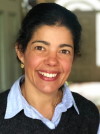 Elina Tripoliti and Jacqueline McIntosh are speech therapists who have worked with Alex Irvine at the National Hospital in London and the Wolfson Rehabilitation Centre in Wimbledon. They have collaborated to bring us a three part article entitled: Speech, Swallowing and Neuroacanthocytosis (NA). Elina Tripoliti and Jacqueline McIntosh are speech therapists who have worked with Alex Irvine at the National Hospital in London and the Wolfson Rehabilitation Centre in Wimbledon. They have collaborated to bring us a three part article entitled: Speech, Swallowing and Neuroacanthocytosis (NA).
Elina Tripoliti and Jacqueline McIntosh are speech therapists who have worked with Alex Irvine at the National Hospital in London and the Wolfson Rehabilitation Centre in Wimbledon. They have collaborated to bring us a three part article entitled: Speech, Swallowing and Neuroacanthocytosis (NA).
Part 1: Working on speech intelligibility throughout the disease process
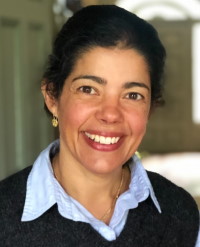 Speech difficulties following a diagnosis of NA can be very diverse and change over time as they follow the spectrum of the disease's continuation. Speech can be one of the first symptoms of the disease with unpredictable and uncontrolled orofacial movements interfering with clarity and flow of speech. Speech difficulties following a diagnosis of NA can be very diverse and change over time as they follow the spectrum of the disease's continuation. Speech can be one of the first symptoms of the disease with unpredictable and uncontrolled orofacial movements interfering with clarity and flow of speech.
Maintaining the ability to communicate needs, wishes, life stories and hopes, when one is faced with a chronic disease should be a priority in healthcare. Due to the complex nature of symptoms, their changing nature throughout the disease progression and the side effects of medication, it is paramount to work within a Multidisciplinary Team and with family and friends.
The first signs of NA can be involuntary vocalisations, grunts, clicks and lingual dystonia (unpredictable tongue protrusion both at rest and during speech/swallowing). The unpredictable nature of these movements can affect the “melody” of speech as well as the articulation. Voice can become quieter, or with sudden bursts of loudness. Working directly on controlling these movements can prove counterproductive due to the effect of fatigue and the dystonia itself. Instead one should be encouraged to explore “tricks” that outwit the system, for example holding the tongue in certain position, or holding a finger on the cheek. Speech can remain intelligible, and the priority at this early stage should be to maintain a healthy and loud voice and to encourage communication and self -expression in a holistic way, not just through speech (singing or poetry).
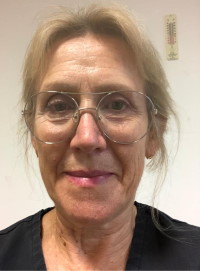 Managing swallowing problems is often another priority at these early stages. Tongue protrusion can interfere with the oral stage of swallowing, and food can escape from the mouth. The time one needs to complete a meal, as well as the enjoyment from eating out with friends is affected. Management of swallowing problems can include pharmacological approaches (botox- with variable results depending on the type of lingual dystonia) and behavioural/compensatory strategies (maintaining safe eating and drinking strategies). Managing swallowing problems is often another priority at these early stages. Tongue protrusion can interfere with the oral stage of swallowing, and food can escape from the mouth. The time one needs to complete a meal, as well as the enjoyment from eating out with friends is affected. Management of swallowing problems can include pharmacological approaches (botox- with variable results depending on the type of lingual dystonia) and behavioural/compensatory strategies (maintaining safe eating and drinking strategies).
I met Alex a couple of years ago, when she came in my Speech-Movement Disorders clinic at the National Hospital, approximately 22 years after her diagnosis. Her speech was hardly audible with indistinct articulation, low volume and very reduced amplitude of lips and tongue movements. Nevertheless, she was a good communicator, through her eyes, subtle changes of facial expression and the use of a Talking Machine.
We set out working online with the aim of restoring her speech to a useful, functional way of communicating. It was made very loud and clear, even through the occasionally patchy online sessions, that phrases such as “I need a cup of tea” or “When is lunch” were not very motivating for speech work, especially when other factors such as fatigue can interfere with the ability to speak. We decided to tackle speech in a more “organised” way, to have fun exploring sounds and to purposefully train muscles responsible for voice and articulation.
There are challenges to provide specific exercises for the patient's exact threshold levels so as not to increase involuntary movement and negate the benefit of training. One is targeting more than one area of motor speech at the same time, i.e. vocal loudness and clarity of articulation, or reading and melody (as in questions), without triggering involuntary movements of the eyes, mouth, tongue.
Recording and playing back speech can be useful but not always welcome. The most direct way is through conversation. In our sessions Alex prepares sentences based on words beginning with specific sounds. We started with the t/d sounds, then moved to k/g and then the harder ones for Alex (due to her reduced lip closure), the sounds p/b. I have to write them down to show my understanding and to correct any mistakes.
In time, the sentences became very unpredictable and imaginative, our sessions more demanding on my listening skills and Alex’s clarity of articulation (see for example the /f/ sentence: “Four famous fishermen found four flounders (flippers flapping furiously) faithfully following four floppy female flat-fish”. The weekly sessions allowed us to build on other ways of controlling speech breakdown, especially for p/b sounds. For example, conscious control of lip closure (i.e. for the first and third sound in the word “Bobby”) can be challenging, not due to weakness but due to difficulty in initiating this particular movement for speech, even though the same movement is easily performed for drinking or eating. Drinking water through a straw brings the lips together and “reminds” the system of the initial movement for the sound /b/. And that’s how “the pink boat parked perfectly in pirate base”.
There are always new targets depending on where each session takes us. Allowing for the effect of fatigue and being aware of side effects of medication is paramount in every session. Mostly though, our way of working evolved from a shared responsibility for the outcome of every session, as it is for the outcome of any conversation. And thus, we “take our cake to the Tate”.
PHOTO CREDIT: Elina Tripoliti (r) and Jacqueline McIntosh (l)
 |  |
RESEARCH UPDATE: Adrian Danek and Gabriel Miltenberger-Miltenyi in Munich ¦ Ruth Walker ¦ Rostock Group
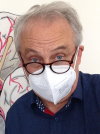 Adrian Danek and Gabriel Miltenberger-Miltenyi provide an update from Munich on the re-established chorein blot diagnosis ¦ Ruth Walker in New York reports on an article about McLeod’s patients ¦ Rostock group reveals increase of neurodegeneration marker in the blood of neuroacanthocytosis patients. Adrian Danek and Gabriel Miltenberger-Miltenyi provide an update from Munich on the re-established chorein blot diagnosis ¦ Ruth Walker in New York reports on an article about McLeod’s patients ¦ Rostock group reveals increase of neurodegeneration marker in the blood of neuroacanthocytosis patients.
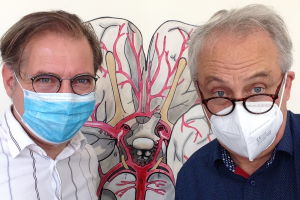 Adrian Danek and Gabriel Miltenberger-Miltenyi in Munich have successfully re-established the chorein blot diagnosis and offer it again for patients world-wide. The diagnosis is carried out using two different chorein antibodies in parallel, binding to the start (N-terminus) and the end (C-terminus) of the protein, respectively. Analysis with each antibody is run in duplicate. Thus, the diagnosis is more accurate. Adrian Danek and Gabriel Miltenberger-Miltenyi in Munich have successfully re-established the chorein blot diagnosis and offer it again for patients world-wide. The diagnosis is carried out using two different chorein antibodies in parallel, binding to the start (N-terminus) and the end (C-terminus) of the protein, respectively. Analysis with each antibody is run in duplicate. Thus, the diagnosis is more accurate.
The diagnostic service continues to be offered for free, through the generous donation of seed money by Betty and Carl Pforzheimer to the Advocacy, in honour and in memory of Glenn Irvine.
Based on the revitalized Western blot service, Gabriel Miltenberger-Miltenyi was able to contribute to a recent paper from Sweden that describes a number of newly diagnosed patients affected by ChAc (Niemelä V, et al. Neurol Genet. 2020 Apr 27;6(3):e426).
Besides, the Munich team provides support for the genetic characterization of ChAc patients and is continuously available for clarification of questions related to chorein and genetic diagnosis (danek@lmu.de and gmiltenyi@medicina.ulisboa.pt). Together with Antonio Velayos-Baeza, they became curators for the VPS13A gene at the open-access Leiden Open Variation Database (https://databases.lovd.nl/shared/genes/VPS13A).
In the first analysis of 22 patients with ChAc-suggestive clinical diagnosis, yet normal chorein band in Western blot, they managed to detect pathogenic mutations in five patients. Of these, in four patients a core neuroacanthocytosis syndrome was diagnosed: in two patients each, mutations in the VPS13A gene (confirming the diagnosis of ChAc) and in the XK gene (associated with McLeod syndrome), respectively. One patient was found to harbour a mutation in another movement disorder associated gene (KMT2B).
In addition, the Munich team continues with the elaboration of a zebrafish model for neuroacanthocytosis diseases (both ChAc and MLS) in collaboration with local colleagues at the German Center for Neurodegenerative Diseases (DZNE).
PHOTO CREDIT: Adrian Danek and Gabriel Miltenberger-Miltenyi in Munich
_____
Ruth Walker in New York has reported an article about McLeod’s patients which may be of interest. In the Parkinsonism and Related Disorders Journal 2019 Jul;64:293-299.doi: 10.1016/j.parkreldis.2019.04.022. Epub 2019 May 2.
McLeod syndrome: Five new pedigrees with novel mutation
https://pubmed.ncbi.nlm.nih.gov/31103486/
Thank you Ruth and your colleagues.
_____
Rostock group reveals increase of neurodegeneration marker in the blood of neuroacanthocytosis patients
German researchers from the Translational Neurodegeneration Section “Albrecht Kossel” at the University of Rostock revealed in an exploratory study that a marker of neurodegeneration is increased in the blood of patients suffering from chorea-acanthocytosis (ChAc) and McLeod syndrome (MLS).
The marker, called neurofilament, is a neuronal protein which is known to be increased in the cerebrospinal fluid and/or blood in a number of neurological diseases, such as Alzheimer’s disease, Multiple Sclerosis, ALS or Huntington’s disease. Testing for neurofilament levels already contributes to diagnosis and performance of clinical trials in these conditions.
The researchers therefore analyzed for the first time neurofilament levels in the serum of several neuroacanthocytosis patients and compared it to healthy control subjects. They found - compared to the diseases stated above - a moderate increase of this marker in all patients. This most probably reflects chronic damage of neuronal cells both in the brain as well as in the peripheral nerves due to the neurodegenerative process causing the symptoms of ChAc and MLS.
The initiators of the study, Andreas Hermann and Kevin Peikert, hope that their findings will contribute to enable future clinical trials in the neuroacanthocytosis field. In a next step, however, the results first need to be confirmed and further evaluated in a larger cohort of neuroacanthocytosis patients. Kevin Peikert, the first author of the study, stated that one main open question concerned the usability of serum neurofilament as biomarker for disease progression as it seemed to stay rather stable within the observation period of the study.
The authors thank the patients and their families for contributing to this study and the Advocacy for Neuroacanthocytosis Patients for the support throughout the last years.
The study will be published in Parkinsonism and Related Disorders. https://doi.org/10.1016/j.parkreldis.2020.09.004
Peikert K, Akgün K, Beste C, Ziemssen T, Buhmann C, Danek A, Hermann A. Neurofilament light chain in serum is significantly increased in chorea-acanthocytosis. Park Relat Dis. 2020. In press.
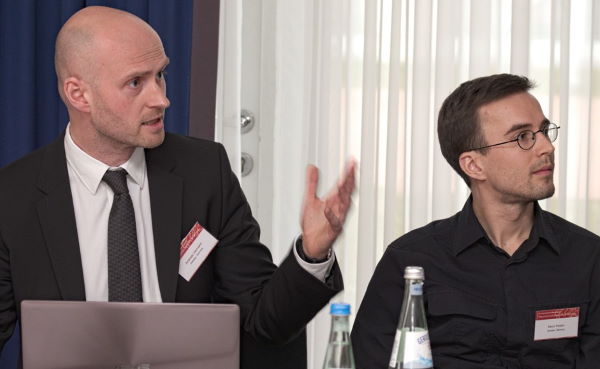
PHOTO CREDIT: Prof. Andreas Hermann, MD, PhD / Dr. Kevin Peikert, MD © Arun Pal
For correspondence, please contact:
Prof. Andreas Hermann, MD, PhD / Dr. Kevin Peikert, MD
Translational Neurodegeneration Section "Albrecht Kossel"
Department of Neurology
University Medical Center Rostock
Gehlsheimer Straße 20, 18147 Rostock, Germany
Phone: +49 (0)381 494-9511
e-Mail: Andreas.Hermann@med.uni-rostock.de
website : https://albrecht-kossel-institut.med.uni-rostock.de/
 |  |
Thoughts on brain donation
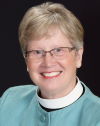 Joy Willard-Williford of NA USA write to us from Florida: "Some families, understandably, have difficulty making the decision to donate their loved one’s (or their own) brain tissue to science. It is unpleasant to think about. It reminds us of our mortality. We prefer to block out thoughts of such things, not to embrace them. My husband Mark and I, however, have four very precious reasons to donate his brain tissue to NA research: Elizabeth, Christopher, Billy, and Emily." Joy Willard-Williford of NA USA write to us from Florida: "Some families, understandably, have difficulty making the decision to donate their loved one’s (or their own) brain tissue to science. It is unpleasant to think about. It reminds us of our mortality. We prefer to block out thoughts of such things, not to embrace them. My husband Mark and I, however, have four very precious reasons to donate his brain tissue to NA research: Elizabeth, Christopher, Billy, and Emily."
Joy Willard-Williford of NA USA write to us from Florida:
Some families, understandably, have difficulty making the decision to donate their loved one’s (or their own) brain tissue to science. It is unpleasant to think about. It reminds us of our mortality. We prefer to block out thoughts of such things, not to embrace them.
My husband Mark and I, however, have four very precious reasons to donate his brain tissue to NA research: Elizabeth, Christopher, Billy, and Emily. Four of our five grandchildren (I did not use their real names for privacy reasons) have the potential to carry the gene for McLeod’s Neuroacanthocytosis Syndrome (MLS). The boys haven’t been tested because of their young age, but there is the possibility that they may have the disease. We know for certain that one granddaughter is a carrier, and the other is a “maybe.” A beloved niece – Mary – is a carrier.
We do not want to see this vicious disease, which struck Mark in his late 40’s, carry on one more generation. We are determined to do all that we can to stop it in its tracks, by supporting research into its cause and treatment. Perhaps you feel the same way about your children and grandchildren, about your loved one who is living with an NA disease now, or about humanity in general. We must find a way to eradicate NA diseases.
Much of the promising research requires brain tissue. Making arrangements to donate is not hard to do; it’s mainly a matter of completing some paperwork giving permission ahead of time, and your loved ones calling the brain bank at the time of death. We did this in 2012 with my mother-in-law (an MLS carrier) when she passed, and more recently with my brother-in-law. My husband and I have signed the paperwork to donate his brain tissue, and the local funeral home has been given a heads up. In our case, we worked with Tamjeed Sikder, the coordinator of the Neuropathology Brain Bank and Research Core at the Icahn School of Medicine at Mount Sinai in New York City. Tamjeed has been most responsive, and easy to work with.
I am no expert on brain tissue donations, but if anyone wants to talk more about how we came to our decision, please email me at joy@naadvocacyusa.org
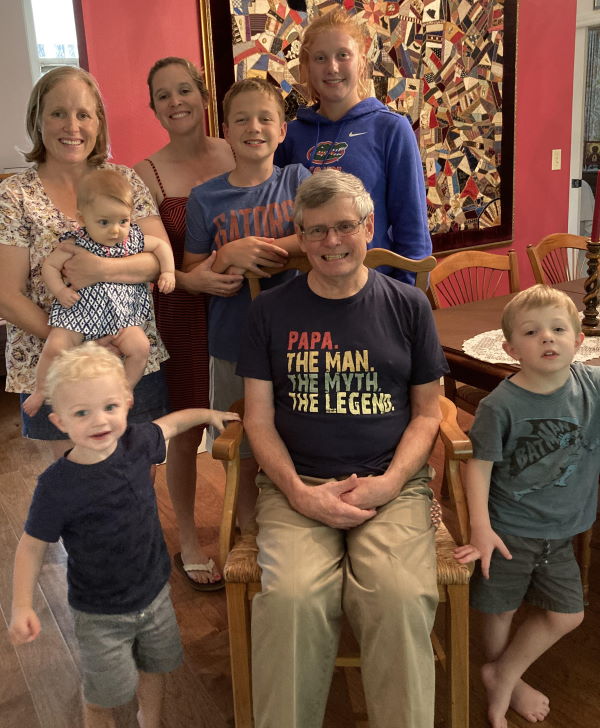
 |  |
Get your emergency alert card for patients and families
 Would you like an emergency alert card to help with communications if a critical situation occurs? The Advocacy was working on designing and printing an emergency card for both patients and carers to be distributed at the Barcelona meeting in March. Would you like an emergency alert card to help with communications if a critical situation occurs? The Advocacy was working on designing and printing an emergency card for both patients and carers to be distributed at the Barcelona meeting in March.
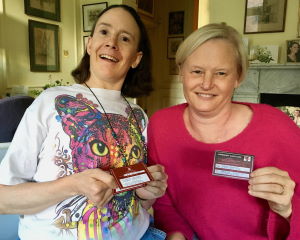 Would you like an emergency alert card to help with communications if a critical situation occurs? The Advocacy was working on designing and printing an emergency card for both patients and carers to be distributed at the Barcelona meeting in March. Would you like an emergency alert card to help with communications if a critical situation occurs? The Advocacy was working on designing and printing an emergency card for both patients and carers to be distributed at the Barcelona meeting in March.
With the postponement of the symposium we decided to proceed with the printing of the cards, and would like to offer them to whoever would like them.
They are the same size as a credit card; the patients card is double in size to contain more information. If you would like any please email Ginger with your mailing address.
PHOTO CREDIT: Alex Irvine (l) and Jen Nanton
FUNDRAISING: In memory of Ed Ayala | Drew Smith birthday appeals raises funds
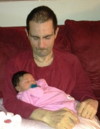 Fundraising initiatives, no matter how small, contribute to the essential work of the Advocacy and we are deeply grateful to patients, their families and colleagues for the work they do to raise money for NA research. Here's an update on fundraising activities by Loida and Jacqui Ayala in memory of Ed Ayala, and a hugely successful birthday appeal fundraiser by Drew Smith. Fundraising initiatives, no matter how small, contribute to the essential work of the Advocacy and we are deeply grateful to patients, their families and colleagues for the work they do to raise money for NA research. Here's an update on fundraising activities by Loida and Jacqui Ayala in memory of Ed Ayala, and a hugely successful birthday appeal fundraiser by Drew Smith.
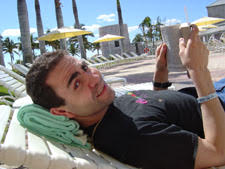 We send our grateful thanks to Loida and Jacqui Ayala for their request for donations to NA be made in tribute to Ed in the summer. Their kind appeal has raised over $1000 for our research fund. Our best wishes to them and the extended family. Ed’s stories are still with us. We send our grateful thanks to Loida and Jacqui Ayala for their request for donations to NA be made in tribute to Ed in the summer. Their kind appeal has raised over $1000 for our research fund. Our best wishes to them and the extended family. Ed’s stories are still with us.
--
On his Facebook page Drew Smith in MA asked for donations to NA for his birthday in the summer: "For my birthday this year, I am asking for donations to the ADVOCACY FOR NEUROACANTHOCYTOSIS PATIENTS. I have chosen this nonprofit because they are searching for clues to a cure which is important to me! I hope you will please consider contributing to support a good cause and to celebrate with me! Your donation will make an impact and will mean a lot to many. Whether you donate $5 or $500, every little bit will help. Thank you for your support."
When his fundraiser closed the Advocacy received $5000 from Drew’s appeal. THANK YOU Drew -- this is a wonderful result, and we appreciate your fundraising for the further research into NA.
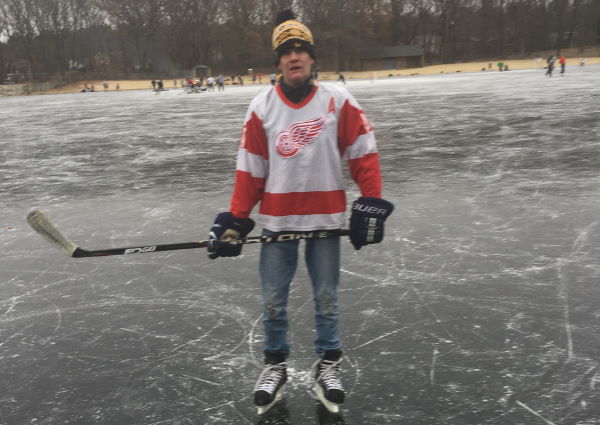
 |
|
 |  |
PATIENT NEWS: Mark Wagner ¦ Mike Koutis ¦ Alex Irvine
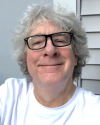 We're pleased to present this roundup of news from NA patients around the world. We're pleased to present this roundup of news from NA patients around the world.
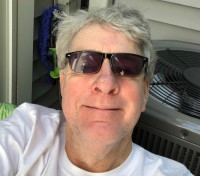 Mark Wagner, sister of Susan who is a McLeod patient has been a 30 year resident of New York City, a diehard Yankee baseball fan and now resides in CT. He is a retired civil engineer, working in construction management for international engineering companies. His work projects ranged from constructing medical laboratories, schools, subway tunnels, and his very last project, the 40-story skyscraper at 11 Times Square, NYC. Mark is an avid world traveler; his favorite places visited are Alaska, Africa, Asia and Sicily. Presently, he is researching and planning 2021 trips depending on COVID-19 status. During these lockdown days Mark returned to his hippie days of growing his hair for 6 months and worked on many ambitious puzzles. Recently he changed his look- thank you Mark! Mark Wagner, sister of Susan who is a McLeod patient has been a 30 year resident of New York City, a diehard Yankee baseball fan and now resides in CT. He is a retired civil engineer, working in construction management for international engineering companies. His work projects ranged from constructing medical laboratories, schools, subway tunnels, and his very last project, the 40-story skyscraper at 11 Times Square, NYC. Mark is an avid world traveler; his favorite places visited are Alaska, Africa, Asia and Sicily. Presently, he is researching and planning 2021 trips depending on COVID-19 status. During these lockdown days Mark returned to his hippie days of growing his hair for 6 months and worked on many ambitious puzzles. Recently he changed his look- thank you Mark!
--
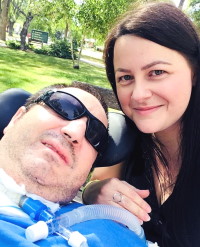 We hear from our correspondent Candi DiMarzio who is a friend of our patient Mike Koutis in Calgary Canada: Everyone has an angel in heaven but there are also angels on earth. Kristy Santangelo Mohr is one angel. She is Mike Koutis’ best friend. Kristy runs her own business, has a husband and 2 children but still finds the time to visit Mike 6 days a week for 2-3 hours a visit. We hear from our correspondent Candi DiMarzio who is a friend of our patient Mike Koutis in Calgary Canada: Everyone has an angel in heaven but there are also angels on earth. Kristy Santangelo Mohr is one angel. She is Mike Koutis’ best friend. Kristy runs her own business, has a husband and 2 children but still finds the time to visit Mike 6 days a week for 2-3 hours a visit.
Because of Covid Kristy wasn’t allowed to visit. Mike kept sending her messages and she could tell he was getting lonely and bored. After writing a letter to Mike’s Social Worker he deemed it necessary for Kristy to visit. It started out as one day a week and then increased to two. She now is back to her 6 days of visiting. In her spare time Kristy also took classes on how to work Mike’s medical equipment so she could take him outside to enjoy the nice weather.
Everyone needs an Angel like Kristy!
--
Claire Huxtable has interviewed Alex Irvine about her cat for us:
 Alex has had Coco for 10 years. She was 15 months old when she got her. She came from a lady who collects stray cats and takes them to the vet to chip them. Coco is black and has a beautiful face with piercing yellow eyes. She makes Alex smile and she keeps her happy. Coco always stays by Alex’s side. She likes to sleep on her bed in the day and at night. Alex has had Coco for 10 years. She was 15 months old when she got her. She came from a lady who collects stray cats and takes them to the vet to chip them. Coco is black and has a beautiful face with piercing yellow eyes. She makes Alex smile and she keeps her happy. Coco always stays by Alex’s side. She likes to sleep on her bed in the day and at night.
She comes into her room to keep her company and to bring gifts of mice (made of cloth). Coco is a lovely companion for Alex.
She likes to lick Alex’s arm and she puts her claws into her skin on her arm sometimes, but not so it hurts.
She likes to go into the communal garden using the cat flap. No one else can get close to Coco, only Alex.
 |  |
Remembering Jerry Pero
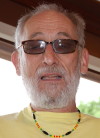 A tribute to Jerry Pero, who sadly passed away earlier this year. A tribute to Jerry Pero, who sadly passed away earlier this year.
We pay tribute to Jerry Pero, our official photographer at the NA Symposium in Ann Arbor MI in 2016. His family posted this lovely testimonial; our best wishes go to you all.
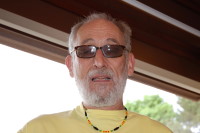 Jerry Lee Pero passed away peacefully on Oct 8th, 2020. Jerry is survived by his wife Karen Pero, his two daughters Kari Pero (Luke) and Tami Nichols (Josh), sister Judy Jackson (Rick), brother Jim Pero (Santa), many nieces and nephews and countless friends. Jerry was born in Salem OR, December 16th, 1946 to parents William and Maxine Pero. Right after graduating from North Salem High, he decided to enlist in the Marines; it was 1966 and he was 19. He honorably served his tour of Vietnam from November 1966 until December 1967. By day he was a Remington Raider, and he stresses it was a manual Remington typewriter. By night he was the company’s Radio Telephone Operator. In those days, anyone over 6ft tall could almost plan on slugging around a radio. He survived his tour of Vietnam without a scratch but lost many friends. He was in the Marines until 1968 but was a jarhead forever. This was the beginning of his lifetime of supporting veterans. Jerry Lee Pero passed away peacefully on Oct 8th, 2020. Jerry is survived by his wife Karen Pero, his two daughters Kari Pero (Luke) and Tami Nichols (Josh), sister Judy Jackson (Rick), brother Jim Pero (Santa), many nieces and nephews and countless friends. Jerry was born in Salem OR, December 16th, 1946 to parents William and Maxine Pero. Right after graduating from North Salem High, he decided to enlist in the Marines; it was 1966 and he was 19. He honorably served his tour of Vietnam from November 1966 until December 1967. By day he was a Remington Raider, and he stresses it was a manual Remington typewriter. By night he was the company’s Radio Telephone Operator. In those days, anyone over 6ft tall could almost plan on slugging around a radio. He survived his tour of Vietnam without a scratch but lost many friends. He was in the Marines until 1968 but was a jarhead forever. This was the beginning of his lifetime of supporting veterans.
On Nov 11th of 1982, Jerry and seventy other Oregonians celebrated the dedication of the National Vietnam Veterans Memorial in Washington, DC. After this awe-inspiring event, on the plane ride home, Ben Stanley said to Jerry, "we can do this", build an Oregon Vietnam Veterans Living memorial. Five Vietnam Veterans and the parents of another Oregonian who was killed in action bought in on the idea. After 5 years to the day, on Nov 11th, 1987, their vision was realized. A living memorial was dedicated for the fallen, not forgotten Vietnam Vets; a place for all to mourn, pay tribute and heal; a site of solace and life.
He dedicated his life to fulfilling the dream of bringing the black granite of the Himalayas to be the Oregon reflection of the wall in Washington, DC. It was more than the names on the wall, it was for the human beings and the family and friends behind those names. Jerry was the driving force of the miraculous effort to accomplish this in stone, pathways, landscaping, a bridge and a fountain. He spent most of his free time at the memorial maintaining her beauty, picking up the cigarette butts, making that granite shine, and just being there to support any veteran that needed someone.
Jerry was a humanitarian, patriot, Vietnam vet, a soldier’s soldier, generous, philanthropist, family historian, photographer, world traveller. He was humble, selfless, a great man with visions he always brought to life. He was never without his camera around his neck, "there will be two flashes" was the warning you got before you were immortalized in one of the hundreds of albums he created. If he met you once, you were a friend, and he was always there for anyone that needed it. There wasn't a “geedunk” (snack stand) that he didn't visit, and God forbid there was something healthy that would give you "scabosis".
He served as vice president of the Vietnam Veterans of Oregon Memorial Fund’s (VVOMF) board of directors during the construction years and served as president since the Memorial’s dedication in 1987.
From 1984-92, Jerry was on the Governor’s advisory committee for the Oregon Department of Veterans’ Affairs. From 2011-2013 he volunteered with Meals on Wheels, serving hundreds of meals to those in need until he was physically unable to drive.
What he could not fix in life, he secured with duct tape. We will remember his smile, his laugh, his crazy erratic dancing, his incessant picture taking, constant snacking. He was a husband, father, friend, neat guy, our “number one”. We will honor Jerry's love for life by celebrating his in the most bodacious way. He made us all smile! And his smile will remain with us forever.
Welcome home Jerry – WELCOME HOME!
A private memorial service will be held for immediate family.
Charitable donations can be sent using this link or checks can be mailed to NA Advocacy USA, Inc., 2285 Harlock Road, Melbourne, FL 32934
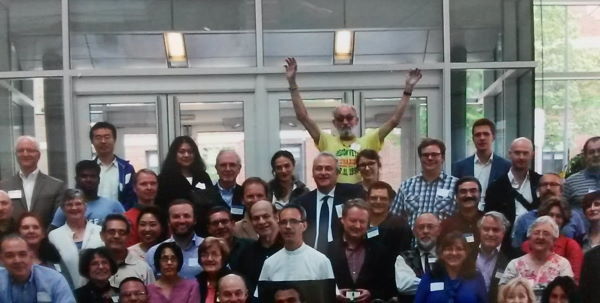
Picture -- Jerry in a yellow T-shirt with arms raised at Ann Arbor Symposium.
 |
|
|
|